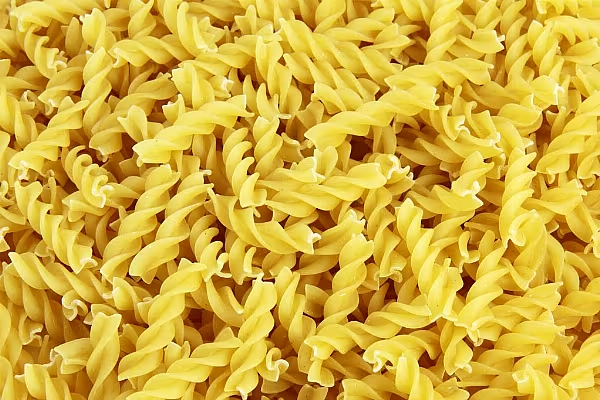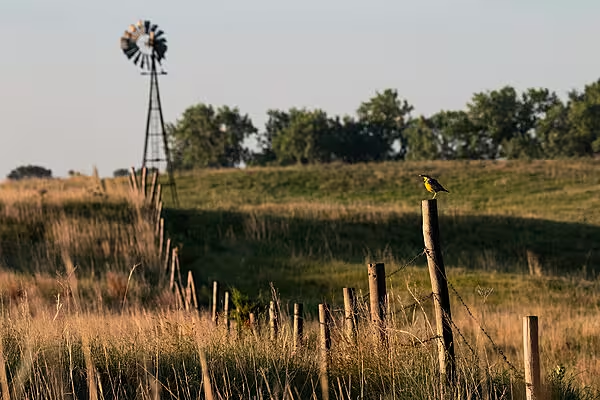Wet fields in Canada are turning what was supposed to be a stellar crop of durum wheat into a soggy mess, much to the dismay of pasta makers.
The prospects for quality durum have been dashed by rain and snow that has delayed and even halted operations. The wheat that’s stuck outside is vulnerable to disease because of the wet conditions. The high-protein grain makes up the bulk of pasta ingredient expenses, and domestic prices have risen in the last several years after repeated harvest hurdles.
To see the pain for pasta makers, look no further than Chris Curran, the 50-year-old owner of Bagga Pasta, which annually makes 25,000 kilograms (55,000 pounds) of everything from fusilli to linguine in Victoria, British Columbia. The 20-kilogram bags of durum flour she buys now cost about C$30 ($22.44), almost double the C$16 she paid about three years ago. And because of the quality problems for this year’s crop, she’s not expecting prices to fall anytime soon.
“Instead of the price going down as I would’ve expected, it will probably remain the same,” said Curran, who added that it’s the first time in her 30 years of pasta-making that she’s seen this kind of sustained jump in costs. “We’re just a very small company trying to survive amid very high prices.”
Fungal Disease
The quality problems are coming as farmers are poised to harvest record durum supplies in Canada, the world’s top exporter of the variety. But the wet fields mean that some of the crop is damaged by the fungal disease fusarium, which can hurt yields and produce chemicals known as mycotoxins that can be poisonous for humans or livestock. With less high-quality crop available, grain companies are struggling to find enough supplies that are suitable to be milled into flour for pasta, said Jerry Klassen, a manager of Canadian operations and trading at Gap SA Grains & Produits in Winnipeg, Manitoba.
Prices for high-quality durum have risen to more than C$8 a bushel, up from about C$6.50 to C$7 before the harvest, said Chuck Penner, the owner of LeftField Commodity Research in Winnipeg, Manitoba. Canada will probably see a drop in exports as overseas buyers don’t want low-quality durum, and some supplies may not even be fit to feed livestock because of fungal contamination, he said.
Other staple Canadian crops, including canola, oats and spring wheat, have also seen price gains because of harvest problems. The Canadian Pacific Railroad Ltd. this month cut its profit target for the year partly as grain shipments in western regions fell behind schedule because of the heavy rain. Light rain and a lack of cold to freeze the ground are continuing to hinder the country’s wheat and canola harvest, Commodity Weather Group said in an e-mailed report Thursday.
U.S. Output
The reprieve for flour millers may come from their southern neighbor. U.S. farmers are forecast by the government to collect the biggest durum crop in seven years. Quality issues have been limited compared with Canada, though farmers are still dealing with some fungal damage. Globally, inventories of all wheat varieties are poised to reach an all-time high, and benchmark futures in Chicago are down almost 13 percent this year.
That’s little comfort to Canada’s growers, who were counting on a bumper harvest after warm spring weather allowed for early planting. The nation’s durum output is poised to climb 36 percent to a record 7.3 million tons after farmers boosted planting to take advantage of higher prices, the agriculture ministry said in a Sept. 28 report.
The problem is a lot of that will be what farmers have described as a “garbage” crop, because of the weather delays that left it sitting in fields, Penner said. Rain and snow have stalled the harvest for almost three weeks in Saskatchewan, where 24 percent of durum has yet to be harvested, the province’s agriculture ministry said in an Oct. 20 report. That compares with just 3 percent a year earlier. Harvest operations were also at a standstill in Alberta, where snow and frost have impacted yield and quality for crops left out in the fields, the province said in an Oct. 21 report.
“It’s quite disappointing,” said Norm Hall, a farmer and president of the Agricultural Producers Association of Saskatchewan. “There’s one thing not to grow a good crop, but when you’ve got the potential of a huge, huge good quality crop, but not to be able to get it, that’s like your dreams just get dashed.”
News by Bloomberg, edited by ESM. To subscribe to ESM: The European Supermarket Magazine, click here.














